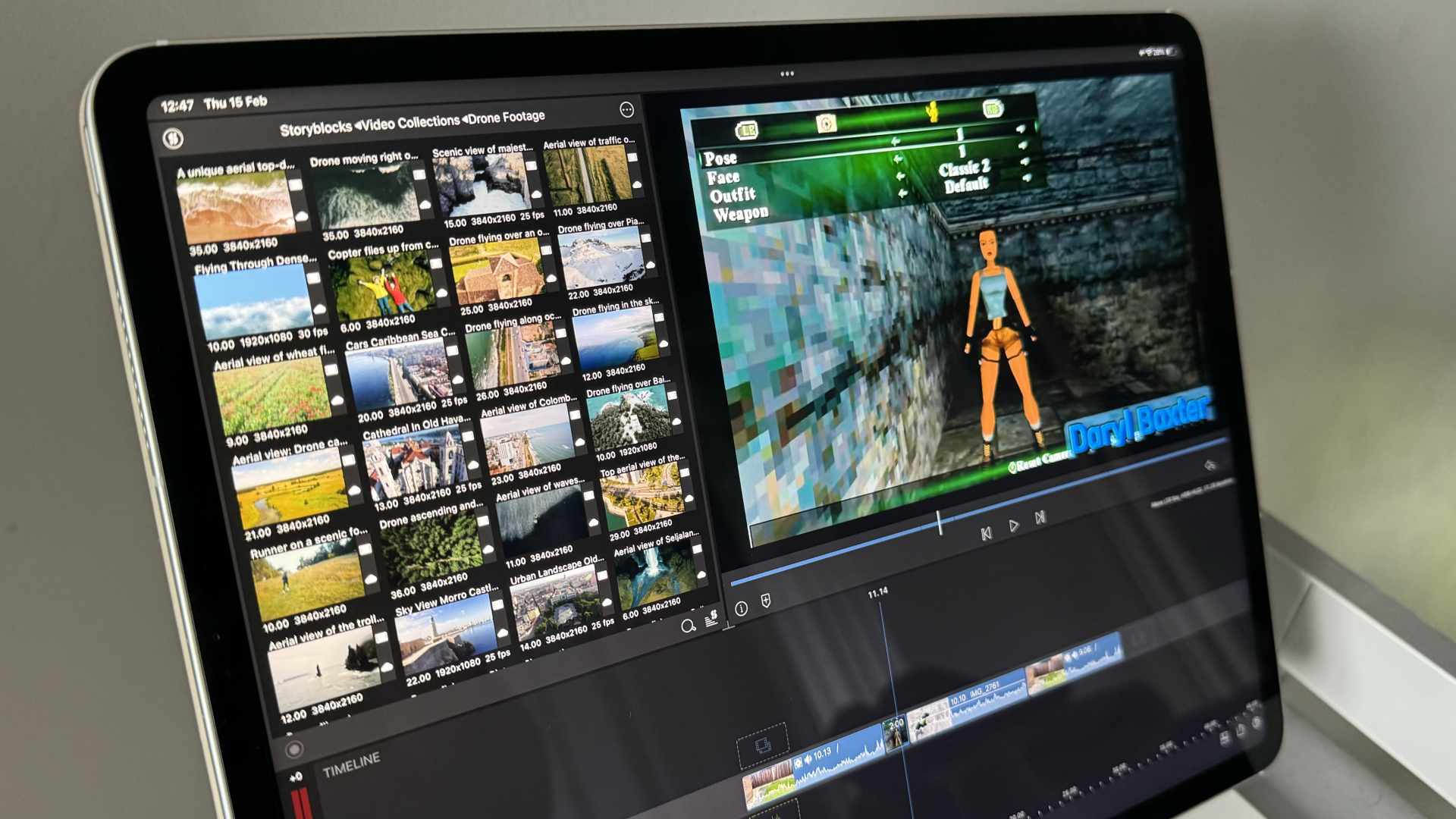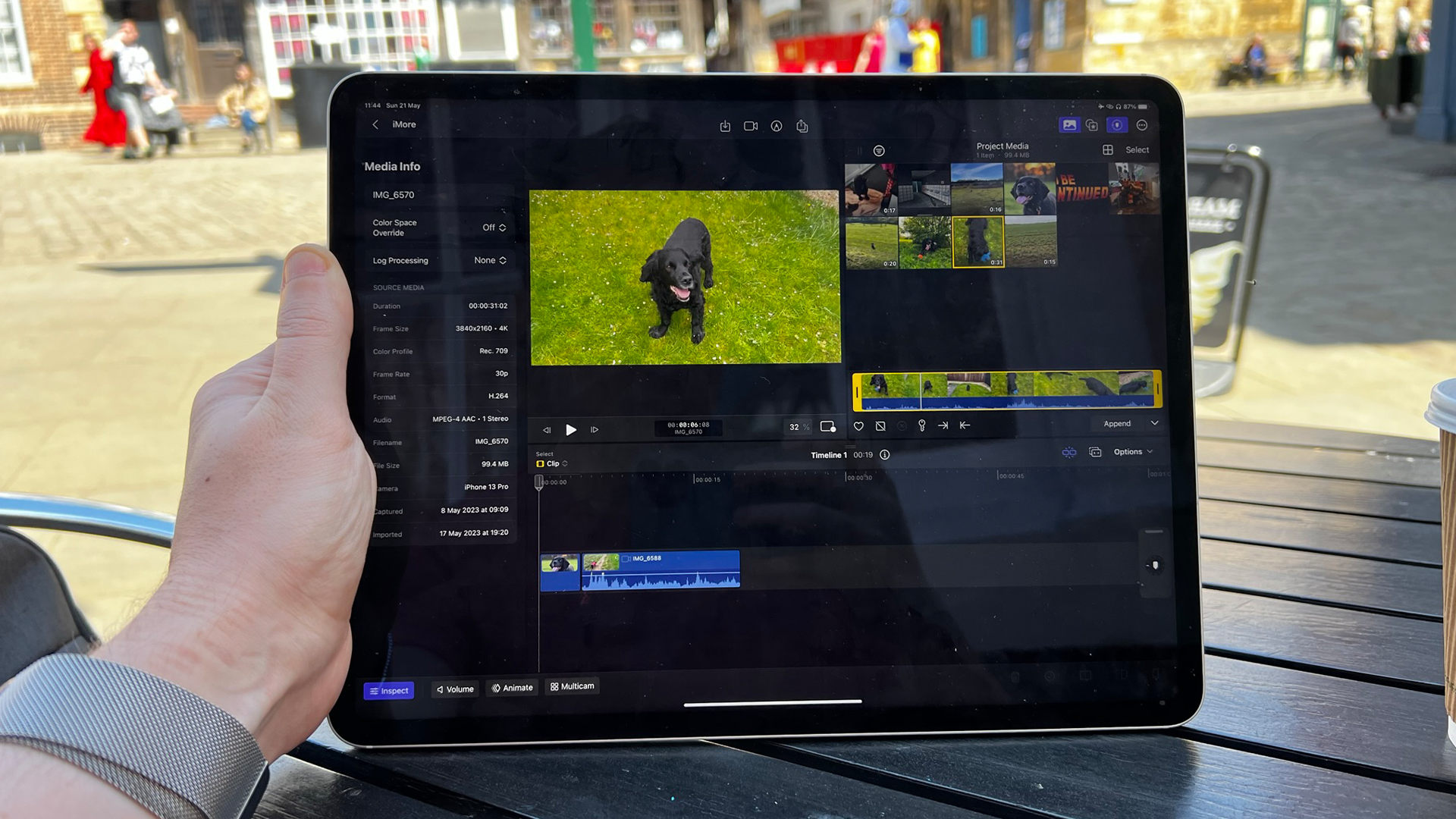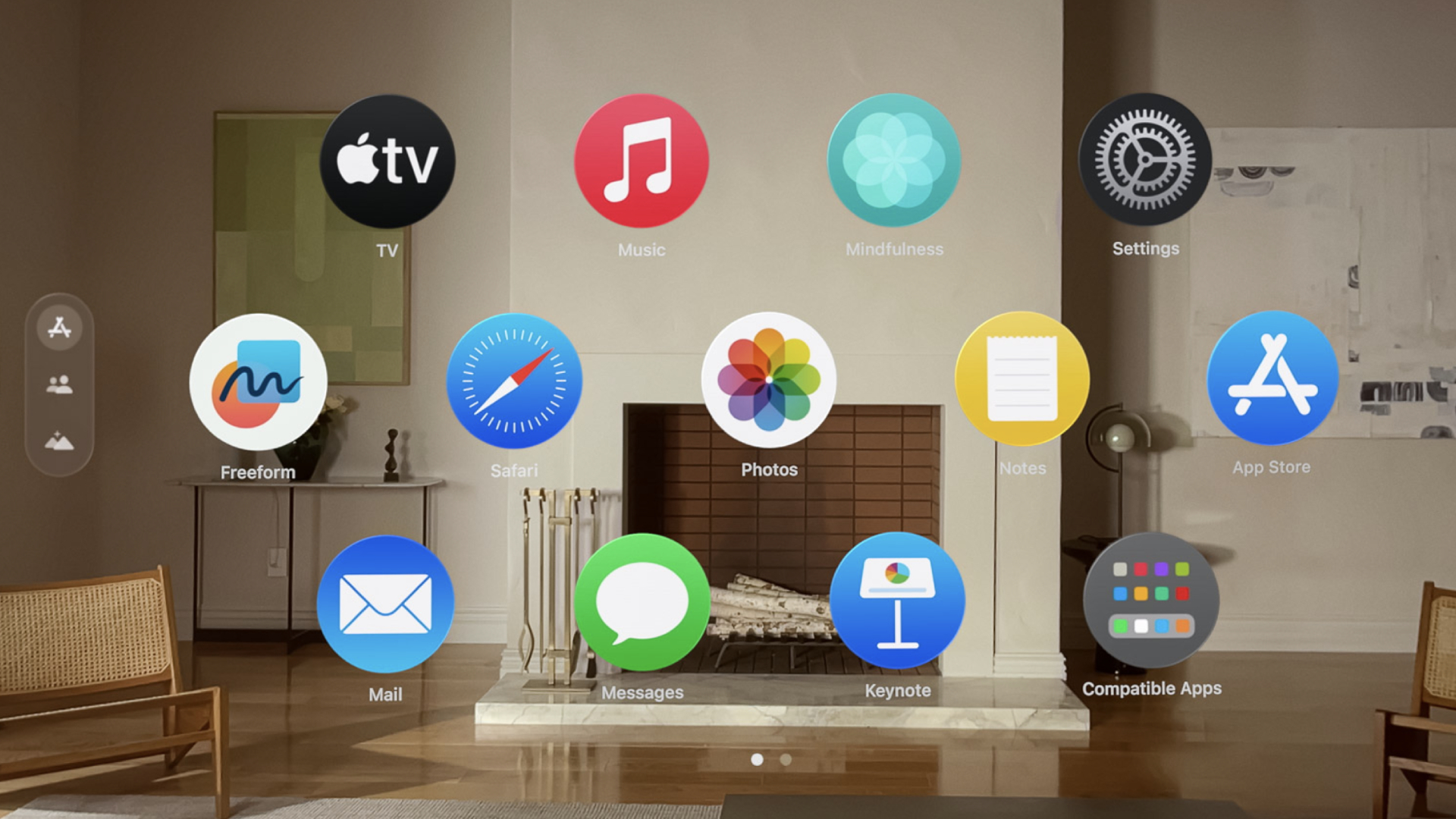"I knew at that moment that video editing was what I wanted to do with my life" LumaFusion co-founder on Vision Pro, rivals, and the future of video editing as the app celebrates its 10th anniversary
LumaFusion’s co-founder celebrates 10 years.

Since 2016, LumaFusion has become one of the best video editing apps you can buy for Mac, iPhone, and iPad — and its two developers have no plans to slow down.
Available on the App Store for $29.99 and on the Google Play Store, LumaFusion lets you easily navigate your video projects through an innovative, color-coded design — from editing multicam footage to dragging and dropping multiple audio tracks into a big project. There’s a lot you can do on this app with just a few taps, which is something you can rarely say about video editing.
The app’s history goes further back than 2016 though. In 2014, LumaTouch was set up by Terri Morgan and Chris Demiris, who wanted to figure out how they could make the best video-editing app possible — which resulted in LumaFusion.
To mark the company’s 10-year anniversary, iMore spoke to Morgan, about how it feels to be heading up a company that’s now 10 years old, and what the future could hold.
The start of LumaTouch

Morgan has been a video editor for a few years now, but she discovered she had a passion for it during the middle of one night. During one fateful night, Morgan discovered, out of the blue, that she had a passion for video editing. “I've been a video editor since college. I wanted to be a photographer, but quickly realized the limitations of it for me and storytelling.” Morgan explains. “So I quickly got into video during college and in the middle of the night, as I was in the editing suite, I just fell in love with it — and I knew at that moment that video editing was what I wanted to do with my life.”
Fast forward a few years, and Morgan met LumaTouch’s other co-founder, Chris Demiris. “We were both in Germany working on Pinnacle Studio, so we met there and I immediately saw an incredible flexibility in him, which is very rare in developers,” Morgan reveals. “Just an incredible attitude about how something could be done. In some of my experiences, a developer would say something like, ‘Well, if we did that, it would ruin everything. Let’s not.’ But for Chris, he would say, ‘Let me think about it’. And three days later, without fail, he would say something like, ‘I thought about it and this is how I think we should do it.’ I remember thinking, ‘I like this. I can live with this.’”
Not long after, both Morgan and Damiris found themselves at Corel, which led to LumaFusion. “Eventually, the team was sold by Avid to Corel, and Corel was going to let the products wither away by not supporting them that much, so the team was laid off pretty much right away,” Morgan says. “We approached Corel and said that we loved Pinnacle Studio, now called Avid Studio, for the iPad that we had made. So we maintained that for Corel for three years while we developed LumaFusion on the side,” Morgan reveals. “Frankly, we offered LumaFusion to Corel because it was the right thing to do. They didn't want it. So we decided to transition it over to our own company.”
iMore offers spot-on advice and guidance from our team of experts, with decades of Apple device experience to lean on. Learn more with iMore!
The age of LumaFusion

In December 2016, LumaFusion arrived on iPad and iPhone, and both Morgan and Damiris found creating the app a refreshingly straightforward process. “We realized right away that we needed to make LumaFusion a universal app with all the latest code and all the things that Apple provided to developers, all the foundations so to speak,” Morgan explains. “So LumaFusion was a universal app for iPhone and iPad, and we launched in the last week of 2016. In a way, it's been seven years for LumaFusion, but because it took us three-plus years to develop, so Chris and I have been LumaTouch as a company for 10 years now.”
Despite debuting almost a decade ago, LumaFusion is still regarded by users as the go-to video editing app. “I think what's really cool about being the first professionally geared mobile editor is that we were able to define the category and how deep should it go for iPhones,” Morgan says. “The way we did that was through our passion — both for storytelling and editing. These are the main things that drive us forward to improve every time.”
Throughout the years, LumaFusion has introduced many features, such as new editing effects, new sharing options when exporting a project to a Mac, and more. When asked about any features that have specifically stood out to her in recent years, there were a few she had to highlight. “When we integrated Storyblocks, which is probably the most affordable music and video library you can get because LumaTouch covers a lot of that cost for our users. It meant that you open the app and you always have something to play with if you have Storyblocks.”
“Another moment was external drive editing. Storage had always been a complaint, before LumaFusion, and even back when we were working on Pinnacle Studio — we had users, working on movies that wanted to use their iPads on set with these drives,” Morgan reveals. “So they really wanted more storage and we didn't have a solution. So when that (external storage support) came to the iPad with iPadOS 13, we could see what people were doing with this in LumaFusion.”

Morgan explains further how this feature recently improved with the latest iPhones. “With iPhone 15 Pro and Pro Max, you can now edit directly on the external storage from your iPhone. I’ve seen users stick storage drives to the back of their phone — and then they unplug that, put it in their iPad, and carry on with their work.”
LumaTouch was recently updated to introduce a new feature called Multicam, which lets users manage multiple shots of one scene with color-coded labels, something that Morgan is a big fan of. “As a professional editor, clients would ask me to do multicam and I was hesitant, thinking, ‘This isn't going to be very fun, but I'll do it.’ But some features have to be done right. And if you don't do it right, nothing's going to work for the user.”
Morgan explains how she approached developing Multicam in LumaFusion. “So I wanted this different experience where you could intuitively edit with Multicam and do things such as placing one side of audio from that camera into one scene, yet also having a leading audio track that's not going to muddle the sound with other shots. So we put in all these things that I always wanted. I think it added a whole other editing app inside an editing app, essentially.”
Multicam was a feature that had been long requested by LumaFusion users. Morgan explains why it took so long to be made available. “The reason why Multicam took so long is that, if it didn't feel right, we just didn't want to put it out. You know, we interview our customers,” Morgan reveals. “They come into the office, or we do it online and have them constantly try our upcoming features. If they say something sucks, we don't just say, he said it sucked, then move on — we look at it in every detail and try to figure it out. So it can take longer, but it's paying off in the fact that the detail matters, and paying attention to the detail reflects greatly on the user experience.”
Morgan and Demiris feel heartened by their efforts when they hear back from users about how the app has enriched their lives. “There are users who write to us and say that they’re making a living because they can afford our app, as it's a one-time purchase. To me, you can do a feature film if you want on LumaFusion. It’s really inspiring, and has me teary-eyed at times when I see messages like these!”
Morgan was also quick to praise Apple for how it offers plenty of frameworks for developers to easily insert into their apps. “If I were to say anything about what Apple gives to developers, it’s this incredible framework for playing back a complex composition. Because we didn't port code from anywhere, we built everything from scratch on Apple’s platforms. When they improve on a framework, we may have to a small update here and there — but for the most part, we get that improvement for free. So we just have to turn on the function and test it out.”
App Store

A big moment for any developer is when they see their app at an Apple keynote, or on the front page of the App Store. Morgan remembers how shocked she felt when she first saw LumaFusion put on a pedestal by the company. “When Chris and I saw Apple beginning to mention LumaFusion in keynotes, followed by seeing our logo everywhere, then as App of the Day, then, Editor's Choice — and finally the big one, iPad App of the Year in 2021,” Morgan recalls. “I remember almost shaking my head in disbelief, wondering if it was a dream — only because I've never been used to getting recognition for anything at any company I've worked for.”

“All of a sudden, not being the underdog was terrifying and thrilling all at once,” Morgan reveals. “It was like, people were actually watching what we were doing — and other players in the video-editing space have come in since, like Da Vinci and Final Cut Pro. But I have to say, it was a relief to us that the reaction to both of those was so disappointing,” Morgan reveals. “In fairness, the other two have their place for a bunch of users, but we saw the impact of when they came out. We're now seeing the return of users realizing how much seven years of effort of me and Chris making it usable and friendly and, most of all, fun, has paid off,” Morgan explains. “And our numbers are starting to go back up. Every time someone new in the space shows up, I basically crawl under the bed covers and cry for a couple of hours, but then everything’s fine again.”
What could the future hold?

Morgan held back from revealing exactly what could be in LumaFusion’s future, but she did hint toward plans in the post-production space. “Obviously I can't say what future plans entail, but I can say that my job here is to look at the post-production world and try to find places where people are struggling.
I’m seeing how we can help them by providing tools that are not technical, but super powerful to use,” Morgan reveals. “I'm looking at the wider workflow of things so that LumaFusion can have a whole environment to sit in where you can edit a movie from start to finish — instead of feeling like you’re working on a one-legged chair.”

With Apple’s spatial computing headset now available in the U.S., Morgan was quick to mention her enthusiasm for how it could work with LumaFusion. “I'm really interested in Vision Pro. So it's up to us now to say, what's the best thing we could do? And what's come to mind already is, that users have now got all of this spatial area that we've never had before,” Morgan explains. “We're trying to fit things on an iPhone and an iPad, so now that we have this bigger space, what would we do with it?”
Morgan explains further how LumaFusion could work within visionOS. “One idea could be to have your library floating over in one corner, and being able to have clips and different features always there can make a big difference — especially when you're placing in effects to a pivotal scene in a movie,” Morgan explains. “For example, right now we build things on a timeline and layer them up and you go in and out of the timeline to get to your effects. With Vision Pro though, I can imagine having both on screen at once. This could be powerful. I'm not saying that we're doing that right now because, frankly, we're not doing that yet. But it’s an interesting idea.”

AI features have exploded recently thanks to OpenAI’s ChatGPT platform. Apps like MacWhisper use AI to transcribe interviews into text, and Apple is rumored to be announcing its own efforts at WWDC later this year. Morgan is not convinced AI could benefit LumaFusion, but she has a very good reason for that. “So LumaFusion has always been in the realm of not being a template. I don't want to edit from a template. I want to edit from my story — and that's because I love editing and I love storytelling,” Morgan explains. “You could use AI to the extent that you request it to make a video about becoming excellent in what you do. You could ask it to write a script and voice it for me, put some video in, and then export it. And quite honestly, you can do that right now.
So I'm not going to say you can't do any of that, obviously. But I would say, to describe it in that visual way, it won't feel like you personally contributed your creativity or your thinking to that project — it merely came from a prompt.”

Instead, Morgan gives an example of how AI could work with LumaFusion as a tool. “Maybe it could be used for inserting a person over a moving video background, and I want to be able to have that, but nobody shot it with a green screen. So having the ability to do that segmentation with AI feels huge. It takes me further into my creativity rather than doing something creative for me.”
Morgan continues with this idea. “I think we can use it in some way, but as long as I'm at the helm with Chris, they will be features that don't take away the joy of editing. Honestly, if you want to do nothing creative and everything cool, you can do it all in CapCut,” Morgan explains. “You can tell it to write a script and voice it for you and put the video to it. I can do it in 10 minutes and then have a video I can post on TikTok. But that's not what we're about. We're about being — I am me. I'm not modified. I have a story to tell. That's what I'm interested in.”

Daryl is iMore's Features Editor, overseeing long-form and in-depth articles and op-eds. Daryl loves using his experience as both a journalist and Apple fan to tell stories about Apple's products and its community, from the apps we use every day to the products that have been long forgotten in the Cupertino archives.
Previously Software & Downloads Writer at TechRadar, and Deputy Editor at StealthOptional, he's also written a book, 'The Making of Tomb Raider', which tells the story of the beginnings of Lara Croft and the series' early development. His second book, '50 Years of Boss Fights', came out in June 2024, and has a monthly newsletter called 'Springboard'. He's also written for many other publications including WIRED, MacFormat, Bloody Disgusting, VGC, GamesRadar, Nintendo Life, VRV Blog, The Loop Magazine, SUPER JUMP, Gizmodo, Film Stories, TopTenReviews, Miketendo64, and Daily Star.
